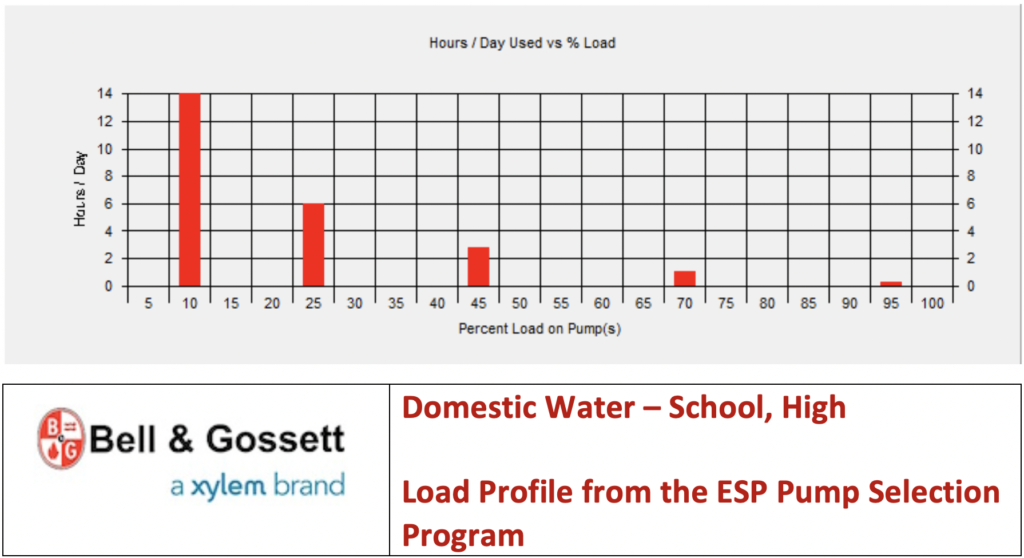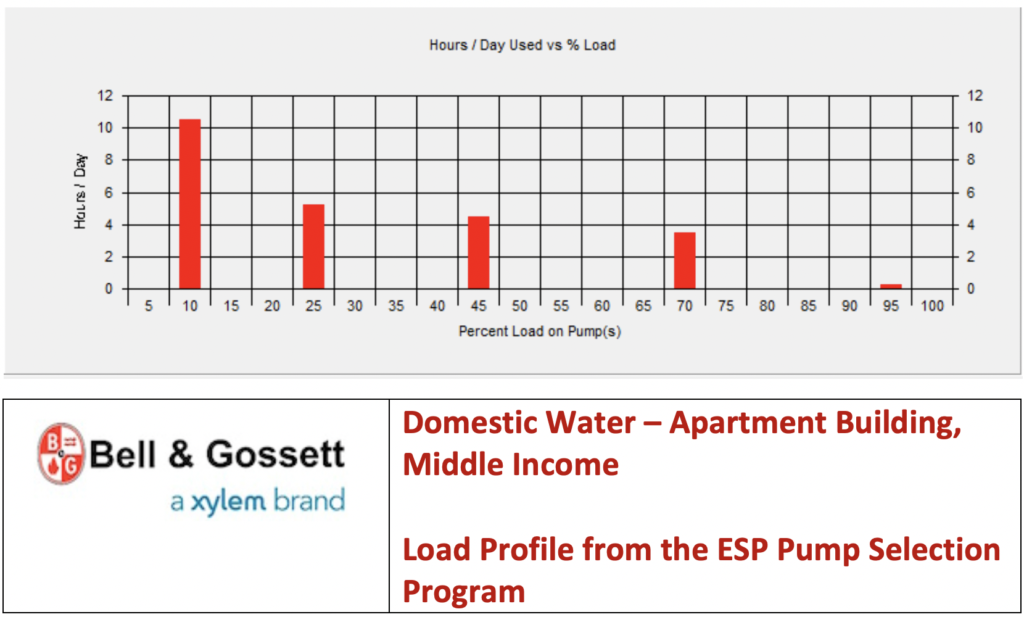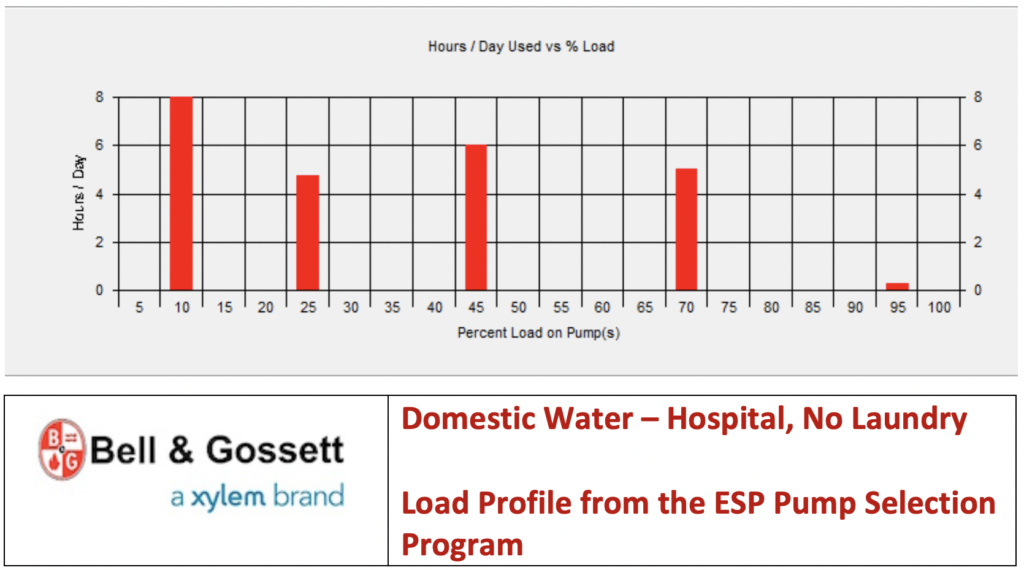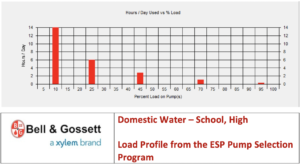 How many pumps should my pressure booster use and what percent of total flow should each pump flow? This question is often asked in the design and selection of pressure booster pumping systems. I will give you some thoughts on this in a couple of weeks but I thought I would write about some background information to help in this decision. Load profiles have a significant impact on the number of pumps and their size. This is often overlooked during design. This week the R. L. Deppmann Monday Morning Minutes (MMM) looks at the plumbing cold water building flow profile.
How many pumps should my pressure booster use and what percent of total flow should each pump flow? This question is often asked in the design and selection of pressure booster pumping systems. I will give you some thoughts on this in a couple of weeks but I thought I would write about some background information to help in this decision. Load profiles have a significant impact on the number of pumps and their size. This is often overlooked during design. This week the R. L. Deppmann Monday Morning Minutes (MMM) looks at the plumbing cold water building flow profile.
What is a Building Plumbing System Cold Water Load Profile?
When selecting a pressure booster system, the engineer determines the design flow rate just as they do in any building plumbing system. There are a variety of methods to determine the total flow rate and most, if not all, tend to be very conservative. The load in GPM is first determined and this is the 100% capacity of the pressure booster. In our example system from the last MMM Domestic Water “Pressure Booster Pumping System” – Suction Pressure, we used an apartment building with a load of 300 GPM. We know that throughout the day the flow rate in the plumbing system will be less than 300 GPM. How many hours it operates at various percentages up to 100% will affect the actual energy used. It will also have a bearing on what we would recommend you use for the number of operating pumps.
The number of hours the building plumbing system uses the total combination of cold and hot water at various percentages of 100% design flow rate is called the building profile. It will vary by building types.
How does the Plumbing System Cold Water Load Profile vary by Building Type?
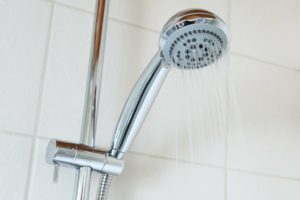 Everyone reading this can imagine that the number of hours at various flow rates will change with the usage of water in the building. The type of building and its occupants have a direct impact on this profile. At 7:00 AM, a hotel or motel will clearly be using more water than other periods of the day. That same design load might occur at a different time and may be spread out for longer or shorter intervals if the building is a hospital.
Everyone reading this can imagine that the number of hours at various flow rates will change with the usage of water in the building. The type of building and its occupants have a direct impact on this profile. At 7:00 AM, a hotel or motel will clearly be using more water than other periods of the day. That same design load might occur at a different time and may be spread out for longer or shorter intervals if the building is a hospital.
Where can I find these Plumbing System Cold Water Load Profiles?
Finding the load profiles can be challenging. The American Society of Heating, Refrigeration, and Air Conditioning Engineers (ASHRAE) “HVAC Applications Handbook” chapter 50 and the American Society of Plumbing Engineers (ASPE) “Domestic Hot Water Design Manual” both have numerous load profiles for Hot Water use. We could make some assumptions and apply some factor, such as doubling, to model cold water use.
Bell & Gossett, a Xylem Company, published load profiles for plumbing pumps in their older pump selection program called ESP-Plus. Below are a couple of examples of these profiles:
I am very interested in knowing if there are other resources for these load profiles. I have asked a question on the ASPE Open Forum. If you know of other resources available, please respond to the forum so many may learn.
What is obvious is that in each profile, the majority of the load or flow rate is less than 50% of the design flow rate. This will have a significant impact on the size of the pump and the energy used by that pump. Why?
Check out the next R. L. Deppmann Monday Morning Minutes to find out why.
Refer back to last week’s Monday Morning Minute on Domestic Water “Pressure Booster Pumping System” – Suction Pressure!

